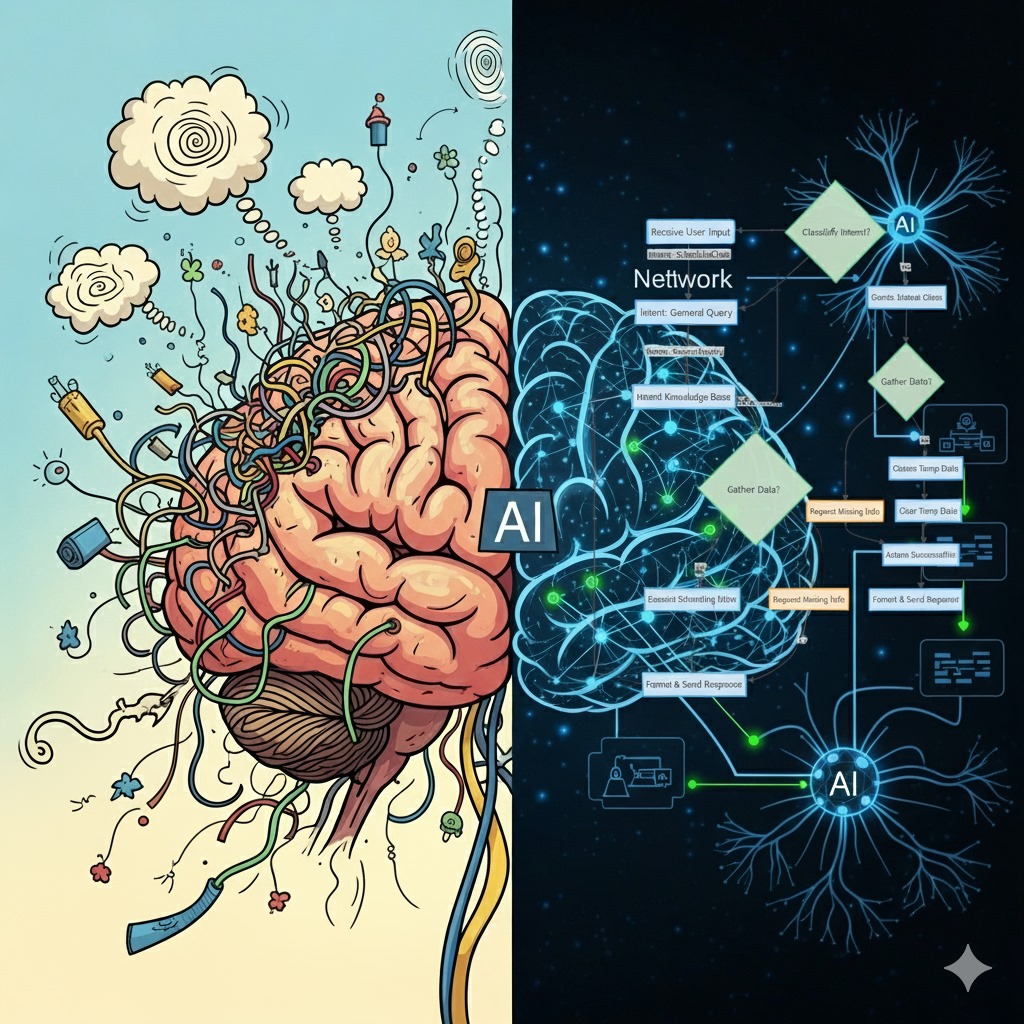From Idea to AI Agent: The Misconceptions of Creating AI Agents 🚀
How we ditched the "single brain" fallacy and built an AI nervous system that actually works.
By Harmony Team | Published August 28, 2025 • 7 min read
When we first set out to build our AI platform, we had a simple, almost naive, idea: we'd plug a powerful LLM into a chat interface, and presto—we'd have a smart, capable AI agent.
We pictured it as a single, all-knowing brain ready to answer anything a customer could ask.
We were profoundly wrong.
What we discovered, after countless hours of development and a few frustrating dead ends, is that an AI for business is not a monolith. It’s not one giant brain. It’s a complex, meticulously designed system with many specialized components, each playing a critical role. Our "aha" moment was realizing that to build a truly reliable and useful AI, we didn't just need a brain. We needed an entire nervous system.
The "All-in-One Brain" Fallacy
The biggest misconception we faced was that a powerful LLM could do everything. We fed it documents, gave it instructions, and expected it to handle every conversation perfectly. We quickly ran into three critical failures:
- Contextual Amnesia: The LLM would forget the context of a long conversation. It couldn't remember what it had already collected from a user, like an email address, and would ask for it again. This was clunky, frustrating, and a terrible user experience.
- Creative Fallacies: Ask an LLM a question it doesn't know the answer to, and it might "hallucinate" or simply invent a response. In a business setting, this is a disaster. We couldn't risk our AI agent making up appointment times or inventing company policies.
- Decision Paralysis: A raw LLM doesn’t know when to book a demo versus when to just answer a question. It can't look at a calendar, check for a human's availability, and then take action. It lacks the critical logic and tools to go from understanding an intent to completing a task.
This led to a valuable but painful lesson: the power of an LLM lies in its ability to understand and generate language, not in its ability to execute complex, multi-step business processes. It's the ultimate creative, but it's a terrible project manager.
Our Breakthrough: Building an AI Nervous System
We had to build a new architecture from the ground up—a structured, workflow-based platform that acts as a mission control for the AI. We call this the Workflow Master. This is our "nervous system."
Instead of a single-minded AI, our platform now orchestrates a series of intelligent steps, much like a seasoned professional handles a task.
Here’s how it works in a simplified example:
- Listen and Understand:A message comes in. First, our system identifies the user's intent. This is handled by a specialized LLM tool called
Intent Classifier. - The Safety Check:Before doing anything else, the workflow checks for potential red flags. This critical step, managed by the
Handoff Checker, ensures a human can step in whenever necessary. - Gather the Facts:If the user wants to book a demo, the system knows exactly what information it needs. It uses the
Entity Extractorto pull specific data like an email address or a preferred time. - Take Action:Once all data is collected, the workflow executes an action, like a call to a third-party API (
Scheduler Integration) to book the demo. - Report Back:Finally, the workflow interprets the result and uses a final LLM prompt,
Action Interpreter, to generate a clear, helpful response for the user.
The Real Secret to a Business-Ready AI
This approach transformed our platform. The LLM is no longer a clumsy, overworked generalist. It’s a powerful, on-demand specialist that our workflow calls upon for what it does best: understanding, synthesizing, and generating natural language.
Our journey from a single-brain concept to a sophisticated nervous system was humbling. We learned that the secret to building a truly effective AI agent for business isn't about having the most powerful LLM.
It's about building an intelligent, logical framework around it that ensures every conversation is safe, precise, and purposeful.